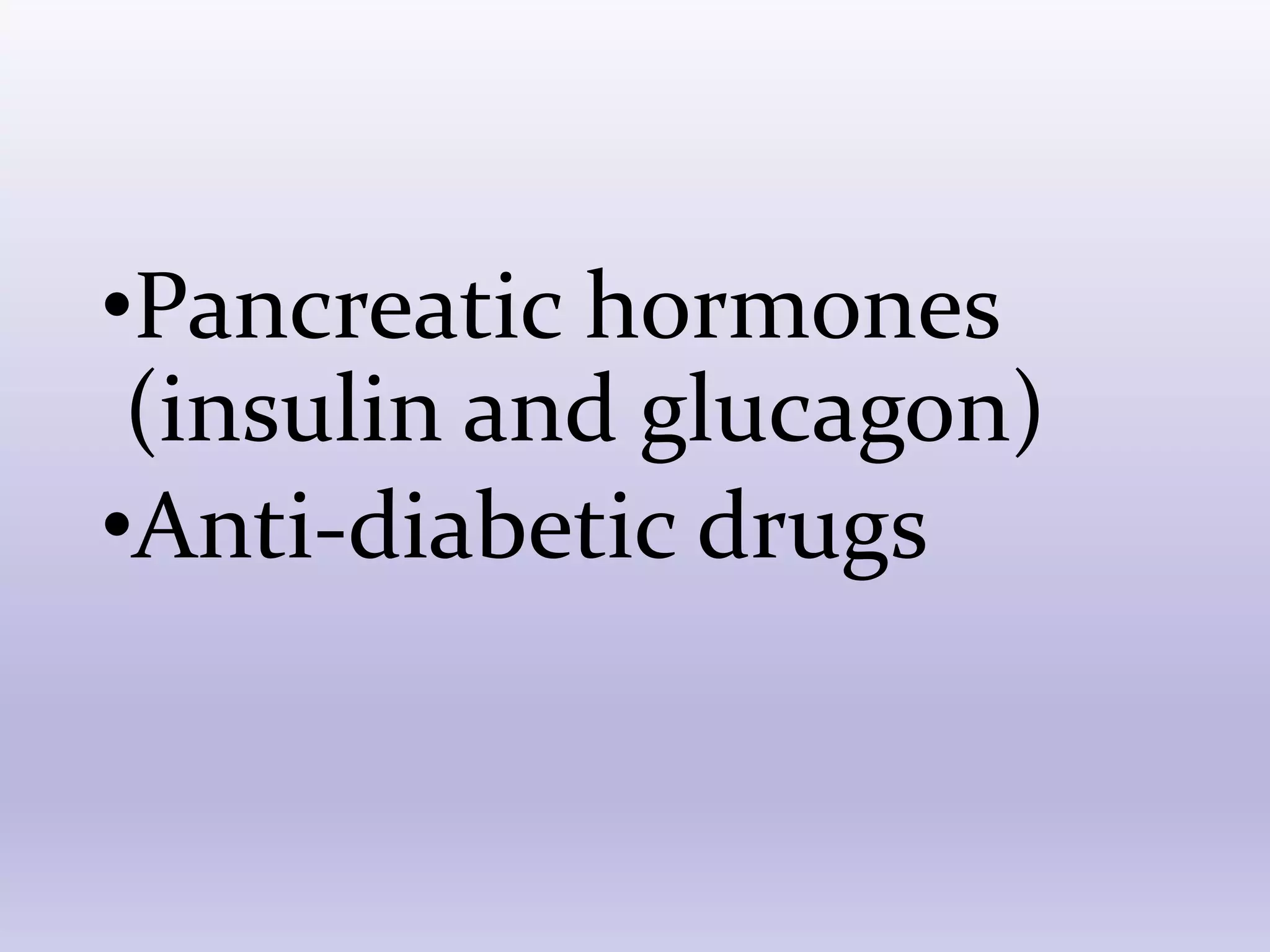The document discusses anti-diabetic agents and the mechanisms of diabetes mellitus, highlighting the differences between type 1 and type 2 diabetes, their pathophysiology, and the importance of insulin in glucose metabolism. It outlines the metabolic complications associated with diabetes, including diabetic ketoacidosis and hyperglycemic crises, and describes various pharmacological treatments, including insulin and oral hypoglycemic agents. Additionally, it emphasizes the significance of lifestyle management and careful monitoring of blood glucose levels for effective diabetes management.






































































